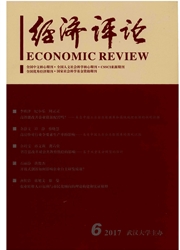

 中文摘要:
中文摘要:
本文建立了一个关于住房投资性需求和城市规模的空间均衡模型,用以解释中国大中城市房价不断攀升的同时伴随着城市规模持续扩大的事实。数值模拟结果显示,当投资性需求不断扩大时,城市的房价上涨、人口和地理规模扩张。与此同时,城市交通基础设施、工资、总产出的水平也会上升。这一结果的内在机制是:投资需求的膨胀一方面推高了房价,增强了城市的拥挤效应;另一方面使得城市政府能够获得更多的土地收入,这些收入大部分转化为公共基础设施投资,城市设施的改善降低了通勤成本,从而抑制了拥挤效应。只要城市集聚经济不变,那么拥挤效应的相对减弱就使得城市净集聚经济增加,从而城市扩张。
 英文摘要:
英文摘要:
In this paper,we develop a simple spatial equilibrium model to address the issue of housing investment demand and Chinese urban sprawl, trying to explain why the Chinese cities sprawl with the soaring housing prices. The simulation results show that housing price, population and physical space of the model city increase with the investment enhancing. At the same time, urban infrastructure, wage and total product also increase. The mechanism behind these phenomenon is that housing investment has twofold effects. On one hand, investment expansion forces the city's housing price to soar, which implies that urban congestion effect becomes powerful. On the other hand,however, city governments acquire much more land revenues brought by investment, anti these rei, enues turn into urban infrastructures which help decreasing commuting costs, and then the congestion effect is weaken. If the urban agglomeration economies don't deteriorate,the relative reduction of congestion effect makes the net agglomeration economies stronger,as a consequence,the city sprawls.
 同期刊论文项目
同期刊论文项目
 同项目期刊论文
同项目期刊论文
 期刊信息
期刊信息
